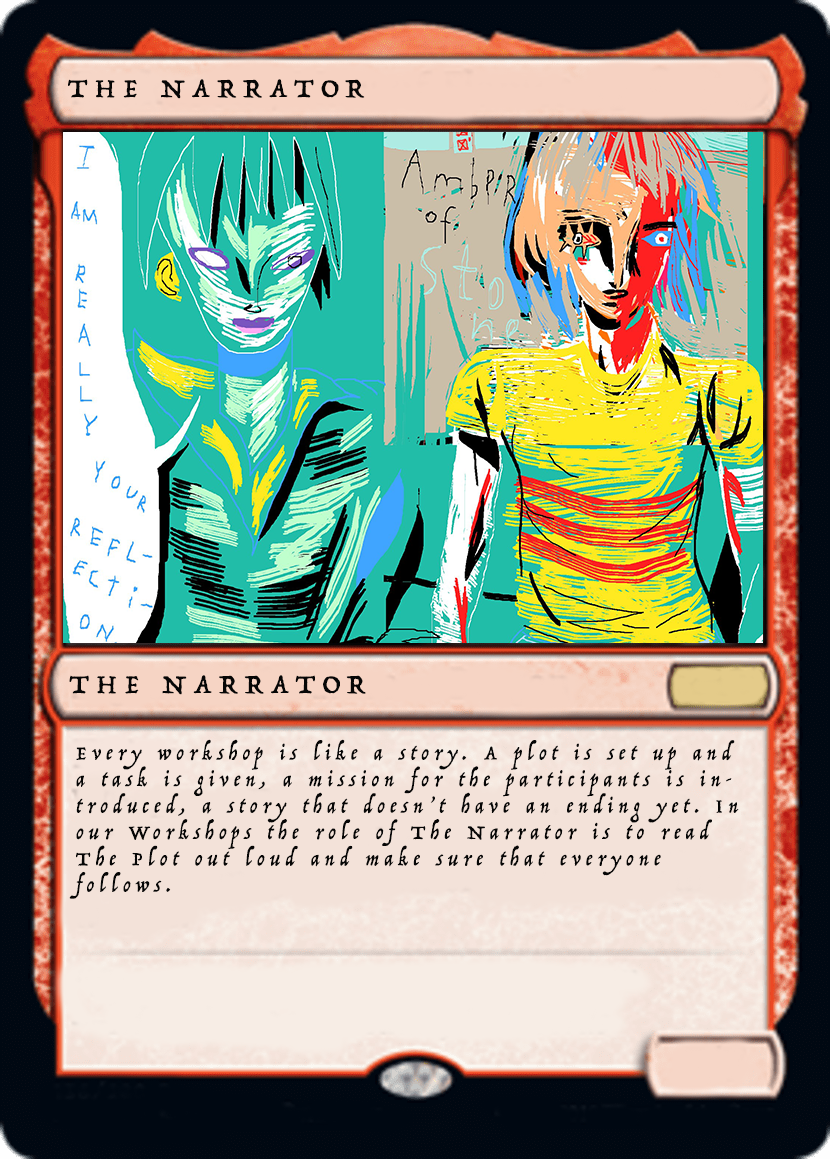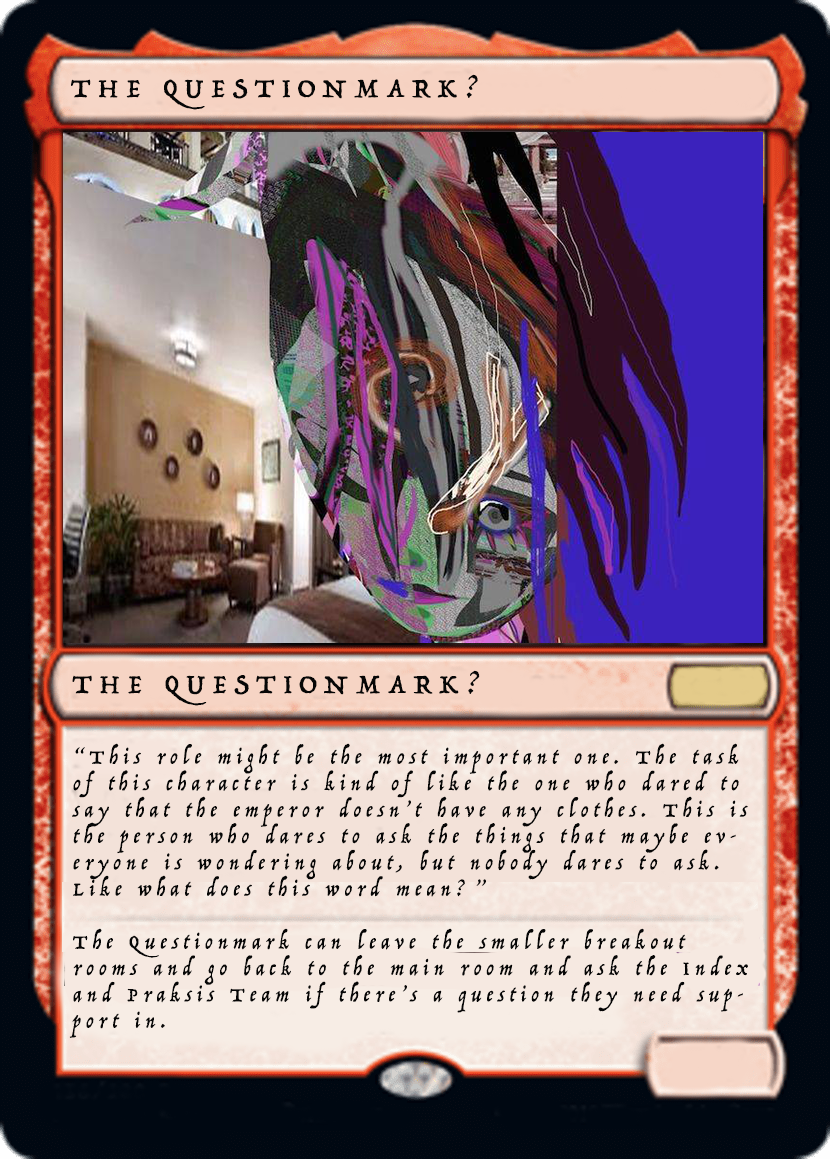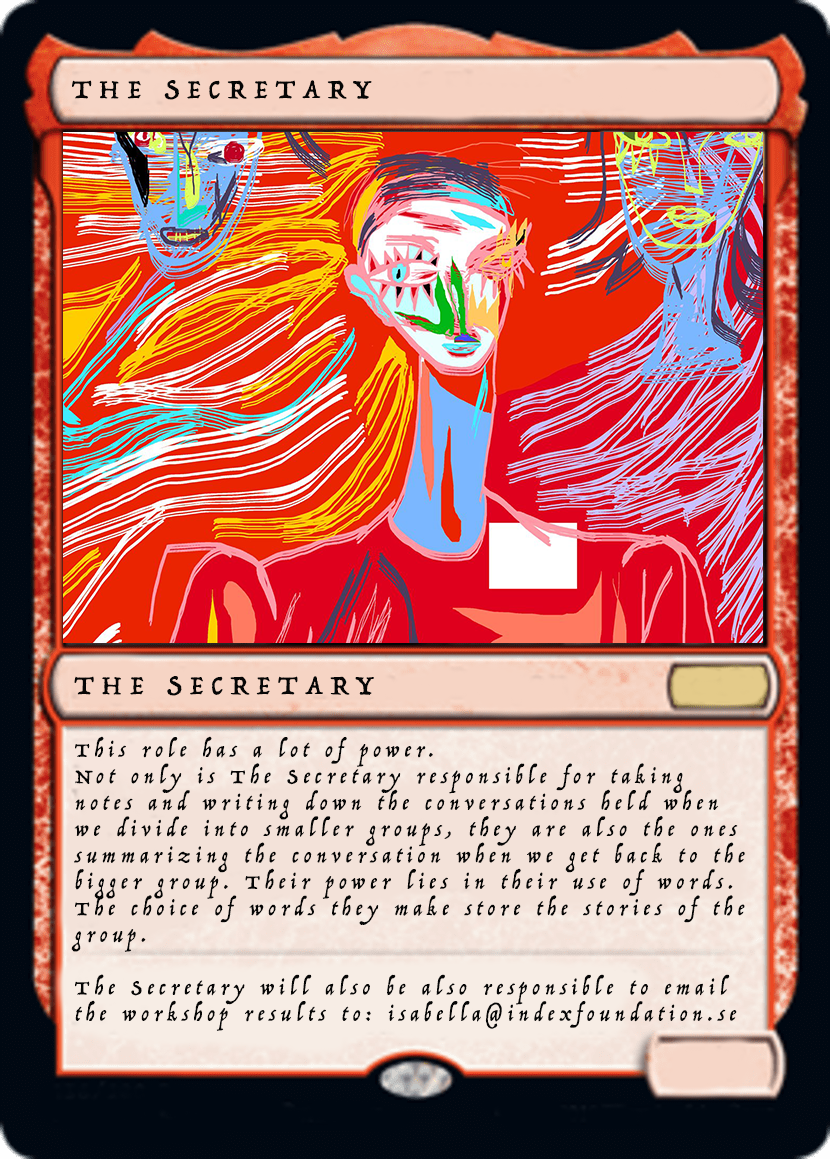Characters in a Conference, Members of an Audience
- C-print

- Feb 14, 2021
- 6 min read
Index in Stockholm and PRAKSIS in Oslo know the importance of allowing the young influence on institutional and artistic practices. As such both organizations see within their respective structure a teen advisory board (ITAB and PTAB). In Character is an ongoing broader project, which looks at how we as individuals are expected to behave in arts spaces – considering the language, policies and structures that underpin these norms. Recently an iteration of the project was held in the form of a conference: Going to a Conference: In Character. As you will learn in a collective feature by our contributors from the teen advisory boards; Jose W. Velasquez (Stockholm), Alva Mårsen (Stockholm) and Annine Slettebø (Oslo), In Character is every bit the forward-thinking feat you might imagine it to be. We told them they had free hands to write and share and they pulled through beautifully. Aside from some editing pointers, these pros were so ready to go.
Written by: Jose W. Velasquez

Different people, different faces. Similar spaces and places alike. Characters in a conference, members of an audience.

In the presence of our previously invited characters. They went to a conference as well.
[Visual diary/thought process starts]
[Asking the questions]

Six pondering characters. What is art? Who are we?
[Processing the questions, through art]

[Makes use of the answer to create a fictive world, one to strive to make true]

Art is about the dreams. “I̶ ̶a̶m̶ ̶u̶n̶c̶e̶r̶t̶a̶i̶n̶ ̶w̶h̶e̶t̶h̶e̶r̶ we can truly make utopias happen”.
[Means of change are taken, the fictive world starts becoming the real world]

Get rid of your mask. Set the tone for your reality, play your role in your very own world.
[Visual diary/thought process ends]

Written by: Alva Mårsén
Going to a conference in character was a swarm of thoughts, connections and discussions. The workshops series In Character centered around the infinity of identity, and how you may use your inner characters to explore the art world. During the conference, this was explored through clothing. Each participant chose a garment or an accessory to symbolize a characteristic they wanted to embrace going into the conference.
There are also certain characters to be found in the digital realm. This was explored by playing with typical zoom-meeting roles such as The Narrator, The secretary and The one asking “dumb” questions.

Illustrations: Eugene Jansson, text: Emmeli Persson


The workshop series In Character was also about spaces. Looking at how we feel in different locations, our stance, our level of wariness.
After an apocalypse, the subway may seem sublime. A cozy ride carrying us to new places. On the contrary, looking at landscapes through the frames at an art museum can be stressful. We may worry about being in the way of other spectators, or feel insignificant in the vast exhibition halls. Sometimes this vulnerability makes us scurry away, but sometimes the floor turns into our scene, ready to be danced upon.
During the conference the place aspect was explored through the architecture of zoom. Through existing in the zoom-grid together, existing in our own physical rooms, existing in our minds, all at once. We stretched our zoom-squares, expanded our mindscapes and moved our bodies.
A conference restricted to the digital can be exhausting. A whole life restricted to the digital can be ruinous. When we are required to look at our screens to meet another’s gaze it’s important to let our sore eyes and consciousness rest. Meanwhile, we swung our arms, leaned from side to side, jumped around and at last – relaxed.
At the end of the conference we found our way to The Pool of Contemplation, brought to us by art historian Temi Odumosu (you can see it in her virtual zoom background...) This is where you’d find us all, bathing in our reflections. Soon enough the pool will start leaking

[Revealing one’s character]
Written by: Annine Slettebø
Do we use pre-made norms to define ourselves? Which of our many roles are the one closest to who we are? How do we detox the public room from ideals that are unhealthy and discriminating? These are all questions that swirled around in my head during the conference we had the last weekend in January. The complexity of the conference, roaming through a multitude of themes and discussions concerning the idea of identity and conventionality, made the importance of it very clear to me. Not only was it an opportunity for me to listen to the perspectives of other great young minds, it was also a platform where these voices, including my own, could be heard. With the theme of the conference being “Going to an exhibition: In Character”, we explored these fixed ideas with an intention of breaking them. Like Jonaya Kemper said in one of the videos we saw during the conference, about LARP and decolonization: “We need to burn down what we think we know, and together build from the ashes.” (Jonaya Kemper, 2020).
It goes without saying that the conference was heavily affected by the world’s current situation. These days, we face challenges that were completely foreign to us a year ago, and suddenly the wonderfully normal life we once found impeccably dismal, lives on in our hearts like a distant dream. Today’s reality of any social gathering is having an obligatory open invitation to your home, which often includes inviting more strangers than friends to the space you feel the least formal. The irony lies in the fact that out of the many characters we embody, the one brought to light through digital socializing is the character we wouldn’t otherwise have shown. However, through this conference I found that the vulnerability that comes with being in one’s own bedroom or living room consequently led to more open and honest conversations. Also, while we discussed mirroring a certain character, or performing unconventional ways of acting in public spaces, the truth in the characters we were currently representing made the digital communication less unnatural.

Illustration: Sara Midtskogen Haave
Using colour coordinated virtual backgrounds for the breakout rooms, we let the digital space imitate the physical world. This was also helpful for creating the scene we wanted to portray for the twitch-stream on the Sunday. While discussing heavy and abstract questions, such as “Are there multiple me’s?” and “Do you change your way of being to fit into the world or do you change the world to fit you?”, the colours created a sense of intimacy and community. In facing questions on identity, I was a ghost in my virtual image, being united with my wall. I suppose Zoom creates a new take on what it means to change the world to fit you. Nevertheless, the digital space we created together included us all.
After the lunch break both days we collectively meditated. Not in the conventional way one might expect, sitting down focusing on our breaths, but by synchronously standing up and moving around. Nowadays I find myself romanticizing the most blatantly simple things that are no longer part of my everyday life, such as meeting people without sitting down. Being told to do the exact opposite of what digital meetings usually consists of, which to me is sitting still for hours, was both refreshing and like Isabella from the Index team said, ridiculously effective. I was jumping from side to side in my bedroom, while looking at a screen that was alive. Again, breaking norms and standards for how to behave in a certain space, we created new rules for our characters and thereby for ourselves.
During the last of our many hours together, the numerous thoughts awakened during the conference were again spiraling through my mind. I found myself asking our guest curator, who was invited to talk about decolonization, Temi Odumosu, about how to navigate through the fog that is societal norms and fixed definitions, trying to understand what one should do in order to break them. How do we, as young voices wanting to be heard, save the world from pre-determined systems that no longer work? That never worked. Ideals, prejudices, norms that define and limit us. Her answer was simple: Firstly, she wanted us to relax, knowing that nothing changes in a day. Secondly, she told us to start with our surroundings. In the knowledge that everyone must decolonize themselves, detoxing fixed ideas and prejudices, we must meet the world with kindness and patience. “Generosity is key, vulnerability is a strength” (Temi Odumosu, 2021).
I believe the essence of what I am left with after the conference is knowing that I, together with everyone else, have the power to define what characters are allowed to be real. The characters and roles we fulfil in our everyday lives, along with the premade characters we allow to exist. Realizing that all norms are subjective, as they are fully contingent to the ones making them, makes it easier reflecting upon how to change the ones that exist today.
www.indexfoundation.se www.praksisoslo.se
Going to an exhibition: In Character (Jan 30-31) www.incharacter.info


